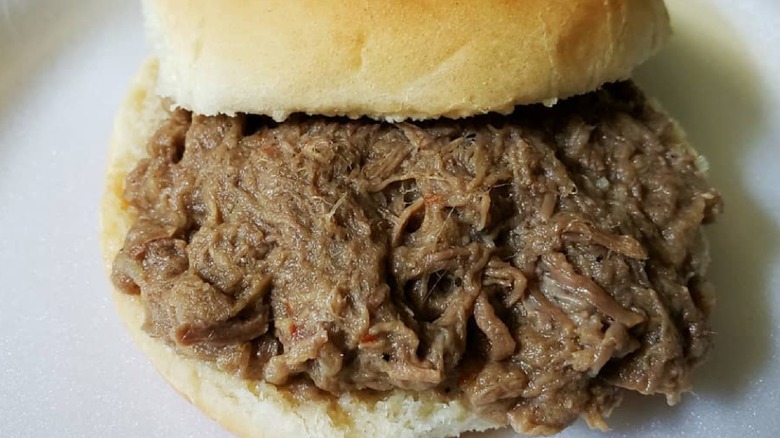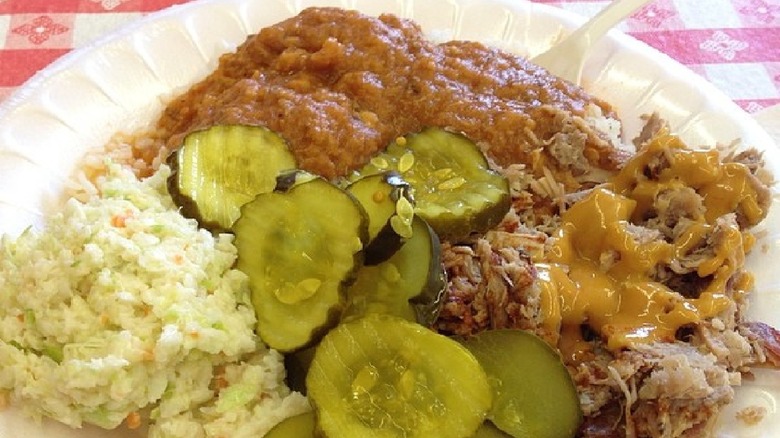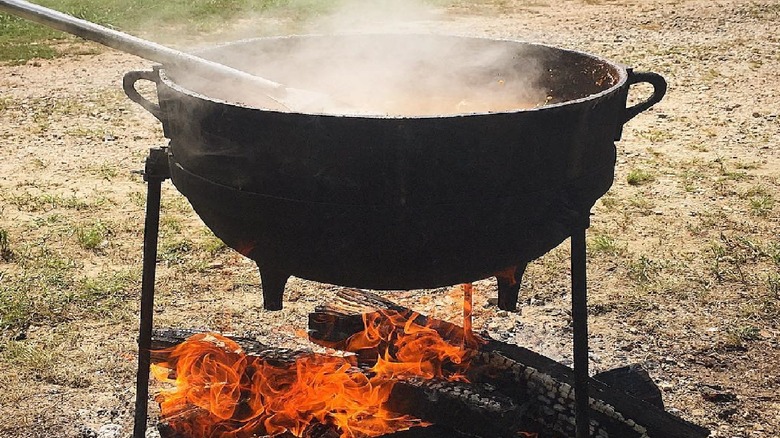Barbecue Hog Meat Hash Is A Beloved Tradition In South Carolina
Think of barbecue, and large chunks of smoked meat, sausages, and ribs come to mind. However, the style of cooking is far more encompassing, including dishes with centuries of tradition across varying communities.
In South Carolina, a distinct regional barbecue dish is known as hog meat hash. A type of pork-based gravy, this thick mixture combines varying pork cuts with flavorful seasonings. It's now become a classic in barbecue spots across the state. Establishments all craft their own unique rendition of the dish, with patrons staunchly supporting their beloved interpretations.
Originally, the dish arose as a method to employ all cuts of pork. The preparation technique slow-cooks under-utilized pork organs into a densely flavored result. And in addition to a meticulous assembly of ingredients, hog meat hash takes skill in its slow-cooking assembly and careful infusion with smoke. No surprise it's become the benchmark of the state's barbecue restaurants. Let's dive into what the delicious classic is all about.
Background of hog meat hash
Hog meat hash traditions trace back to the 19th century, sometime before the Civil War. Popular along the Savannah River, it was also consumed in Georgia but has become interlinked with the cuisine of South Carolina. The dish is especially noted in Black barbecue culture, with similarities to other Southern classics like Brunswick Stew.
The labor-intensive dish is renowned across the state, with many institutions operating for decades. It's also enjoyed as a part of community meals at churches, fundraisers, and other events. Hog meat hash is usually eaten over rice, as a side during barbecue meals. However, the dish boasts outsized importance; many assess the quality of the eatery based on their hash. In fact, some consider it the most strenuous barbecue dish to prepare, with factors like the hickey wood smoke, complexity of seasoning, and technique all contributing to flavor. As a canvas for distinct interpretations and flavors, the dish has emerged beloved classic in the state. But how does it come together.
How hog meat is prepared
Traditional hog meat hash employs cuts of pork not fit for barbecuing, such as the head, liver, and lung. While some establishments continue this preparation, cuts like pork shoulder, butt, ham cuts, and beef now form a more common base for the dish. As a type of barbecuing, the firing method impacts the flavor, too. Some utilize gas stoves and large pots, although wood-fired coals and a large cast-iron vessel lend a more flavorful method.
Approaches to preparing the pork differ among cooks. Some boil organs until tender, while others roast or smoke the meat. Next starts the assembly of the hash itself. Onions and potatoes are sautéed and then mixed with the pork. Most modern renditions then utilize an immersion blender to puree the mixture coarsely. Other interpretations utilize a meat grinder before introducing the pork or cook down the meat on low, slow heat.
After returning to the stove, it's time to season the dish. Black pepper, apple cider vinegar, and mustard — often in the form of regionally popular barbecue sauce — are stalwart ingredient additions. Other flavors include ketchup, hot sauce, secretive spice mixes, and butter or margarine for thickness. The result is cooked down to a dense consistency with a texture that won't spill when poured over rice. Satiating and full of flavor, it's an unmissable barbecue classic that showcases South Carolina's cuisine at its best.


